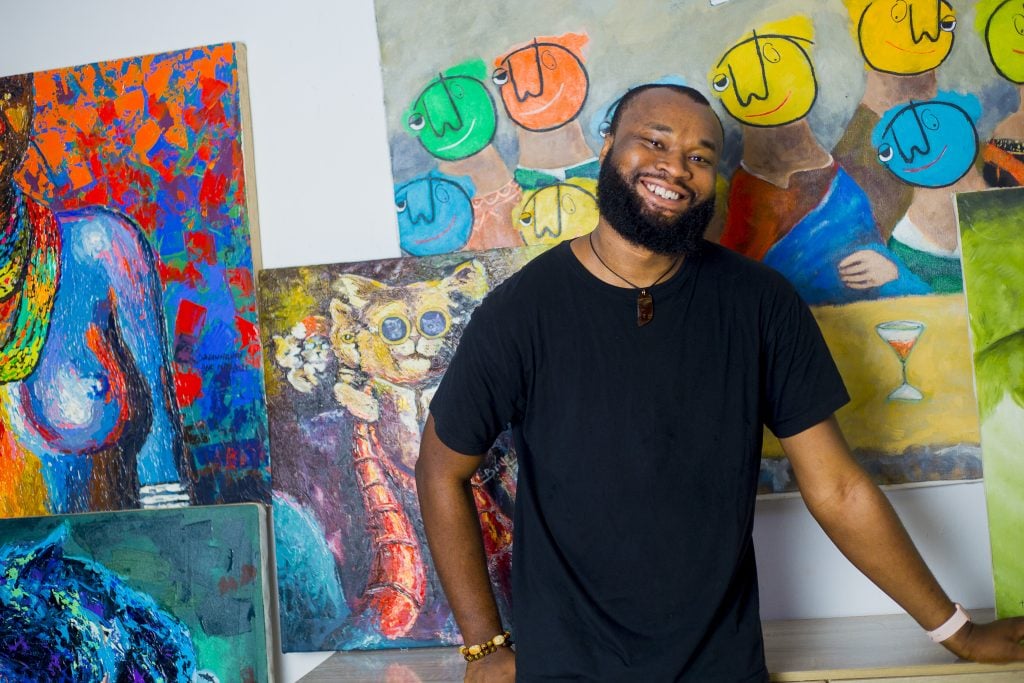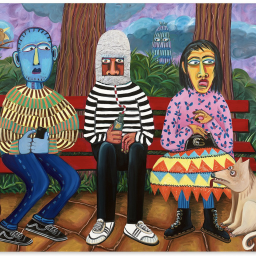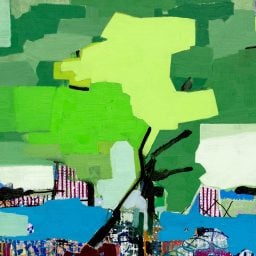Based out of Ibadan, Nigeria, Constance and Sons Gallery has made a name for itself as a platform for fostering and promoting African art and artists—and become a rising presence to watch within the greater international art world. Founded by Dunmade Ayegbayo in 2020, the primarily online gallery has established a dynamic program of exhibitions that highlight both its inimitable roster of artists as well as the nuanced and multifaceted traditions of African art making. Carefully vetted and selected by Ayegbayo, the artists represented reflect the ethos of skill, talent, and quality that Constance and Sons Gallery has sought since its opening.
Recently, we reached out to Ayegbayo to learn more about the impetus behind the gallery’s founding, and what collectors should know about the proliferating Nigerian art scene.
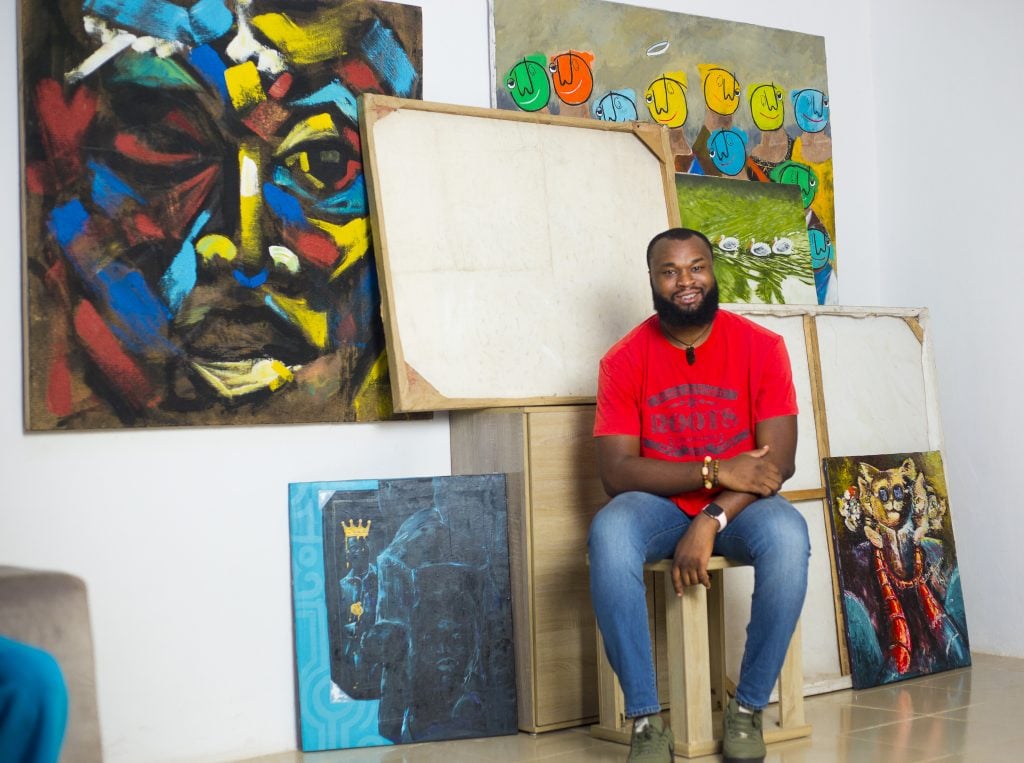
Dunmade Ayegbayo. Courtesy of Constance and Sons Gallery, Ibadan.
Can you tell us a bit about your background, and what first inspired you to open Constance and Sons Gallery?
I am a passionate advocate for African art and a visionary entrepreneur. Born in Osun state, Nigeria, I was raised in an environment steeped in artistic expression, which ignited my interest in fine art and the unique perspectives artists bring to the world through their craft. I’ve been influenced and inspired by the late Chief Caleb Adegoke (a sculptor and my grandfather).
I got my supernatural inspiration to establish Constance and Sons Gallery due to my desire to make a lasting impact on the African art scene and empower emerging artists. I believe the gallery serves as a platform to foster the growth and expand the reach of African contemporary and emerging artists, specifically focusing on leveraging the power of e-commerce to connect artists with a broader audience.
Along with being a gallerist, you are also an artist yourself—does this influence or inform how you operate the gallery?
Yes, this helps me understand some events from the artist’s perspective, meanwhile, I found my voice in art and business after I joined Victor Art and Enterprises, a renowned art organization, through which I was able to embark on this career journey. combining my love for art with my skills in art and artist management.
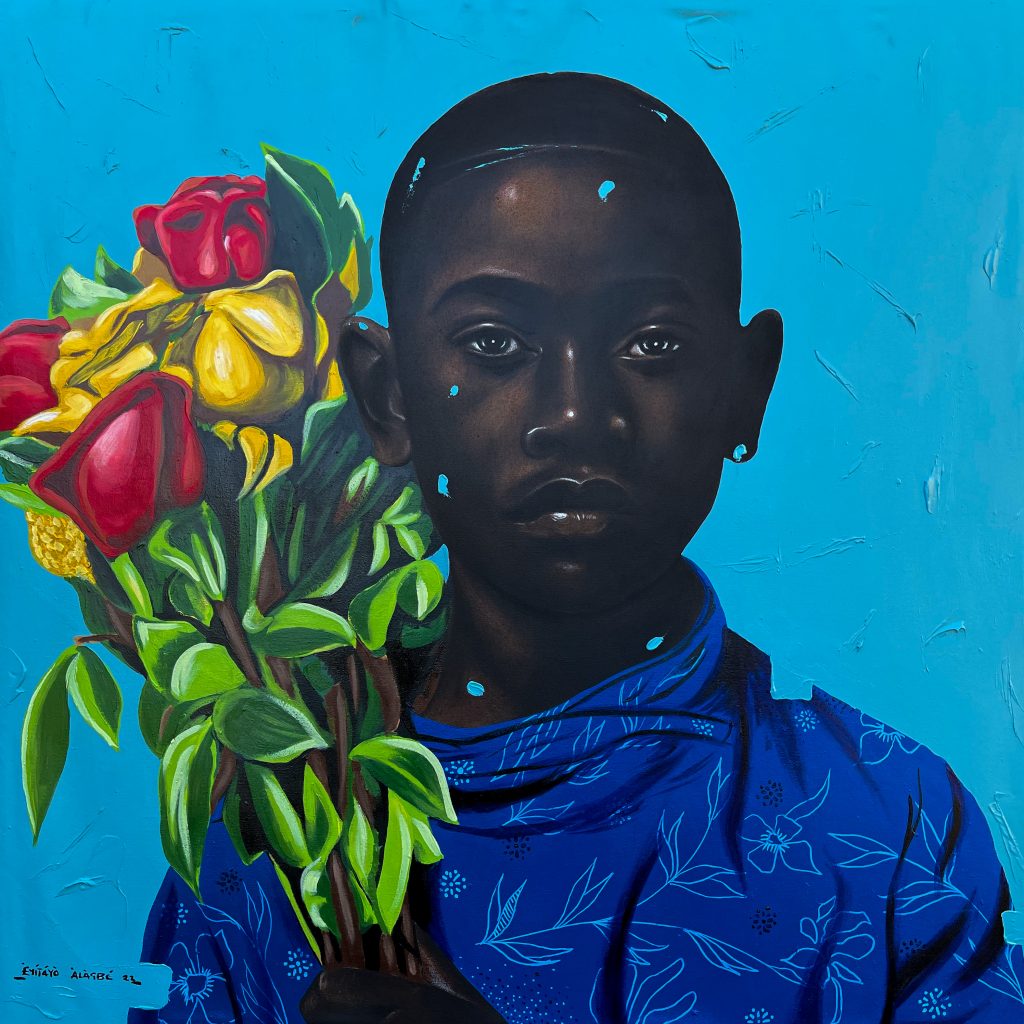
Eyitayo Alagbe, Believe 1 (2022). Courtesy of Constance and Sons Gallery, Ibadan.
What would you say is the core mission or aim of Constance and Sons Gallery? Has this evolved or changed since its inception?
The gallery’s mission has always been the same: to identify, cultivate, and expose works of art based on a meritocratic basis. In a world where talent often goes unrecognized, the gallery stands as a champion of fairness and equality. By assessing artistic excellence, originality, and cultural significance, the gallery ensures that the artists it represents are truly deserving of the recognition they receive.
Although many other factors motivate me to focus much more on artists’ rewards for their labor; I have often found out that African artists are not well compensated in their dealings with some galleries.
How would you describe the type of art and artists that the gallery represents?
The gallery represents African-based artists. I believe there is an originality attached to Black art, which cannot be found elsewhere.
You know Black art and Black artists have unique qualities and characteristics that distinguish them within the broader art world. These include a cultural identity that reflects and celebrates the history and experiences of Black people—and which tends to explore the themes of African heritage, diaspora, social justice, and the African American or Afrocentric experience. Spiritual and ancestral connections that reflect the belief in the interconnectedness of past, present, and future generations are also present as are questions of cultural preservation and legacy. All this can be found in African art.
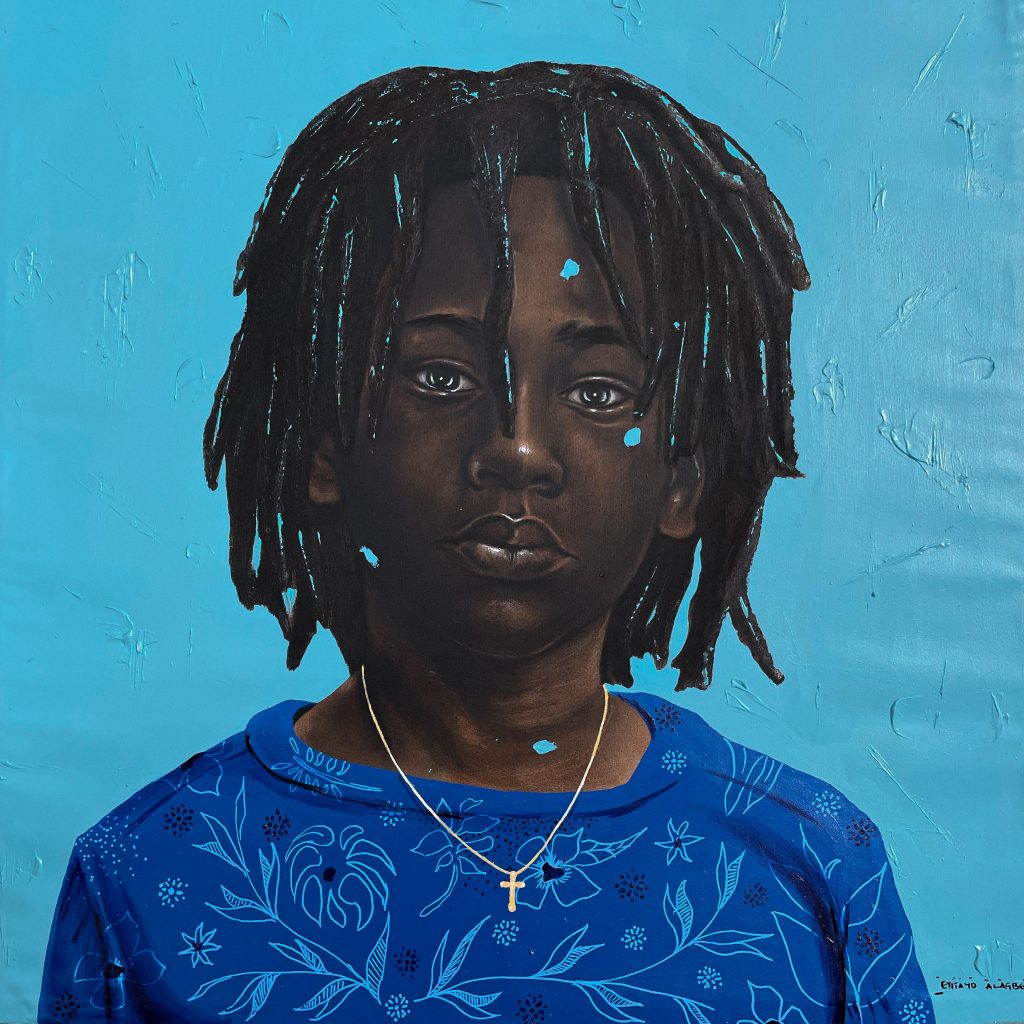
Eyitayo Alagbe, Believe 2 (2022). Courtesy of Constance and Sons Gallery, Ibadan.
The gallery currently has the exhibition “What Happened to African Fashion: Tunde Bakare” highlighted on its profile. Can you tell us a bit about the show?
Tunde Bakare is an experimental artist who uses his craft as a means of preserving a true fashion cultural heritage. This exhibition preaches African fashion and its evolution over time.
Let me say the exhibition is a reflection on the cultural significance of African fashion and its role in shaping individual and collective identities. It also challenges preconceived notions and stereotypes by highlighting the richness, complexity, and global relevance of African fashion. By celebrating the diversity and creativity of Africa’s fashion industry, the exhibition pays homage to the cultural heritage and innovation that continues to shape the continent’s fashion landscape.
Take for instance the Yoruba people, one of Nigeria’s largest ethnic groups, who have a long and storied history of sartorial expression. Traditional Yoruba attire is renowned for its exquisite craftsmanship, bold patterns, vibrant colors, and attention to detail. The exhibition “What Happened to Africa Fashion” offers a captivating glimpse into the best Yoruba style of dressing, shedding light on its significance within Yoruba culture and its impact on the broader African fashion landscape.
What do you think collectors first approaching the Nigerian art scene should know?
Rare and special! The collector must understand that right from the history of fine art, the African mode of creating craft is rich and cultural.
Nigeria has a rich and diverse artistic heritage with a long history of artistic traditions and cultural expressions. Collectors need to familiarize themselves with the different art forms, styles, and cultural contexts that have shaped Nigerian art throughout the years.
Nigeria is also home to many renowned and established artists who have achieved national and international recognition encompassing a wide range of artistic practices, including painting, sculpture, textiles, ceramics, photography, performance art, and more. Collectors should explore and appreciate the diverse mediums and techniques employed by Nigerian artists.
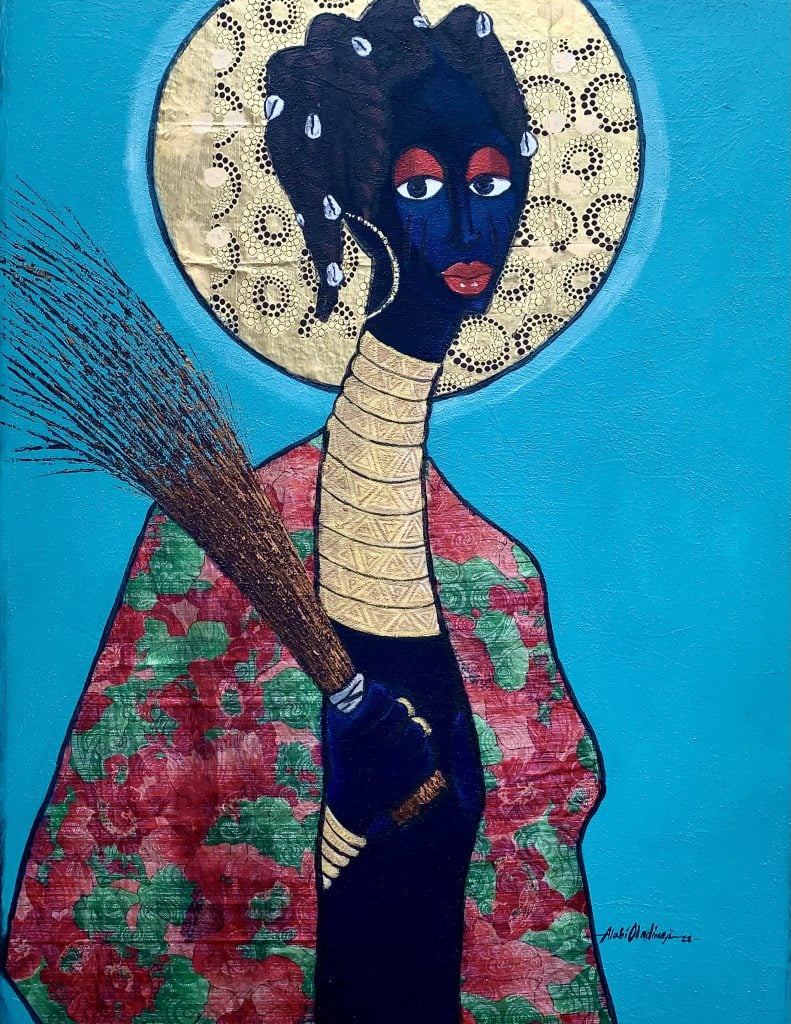
Oladimeji Alabi, Symbol of Memories 2 (2022). Courtesy of Constance and Sons Gallery, Ibadan.
What’s on the horizon for the gallery? Is there any gallery news or forthcoming exhibition that you can tell us about?
There is an exhibition currently going on on Artnet, “Melanated Memoir,” which is a captivating and thought-provoking showcase of art that explores the rich cultural heritage, lifestyle, and experiences of Black Africans.
I will invite the viewer to focus on the figurines painted on the faces of the muse and capture the distinctive physical features that define the diverse ethnic groups of Africa. From the elongated necks and ornate hairstyles of the Ndebele people to the scarification patterns of the Yoruba tribe, these artistic representations emphasize the uniqueness and individuality of African women. The intricacy of the figurines showcases the attention to detail and craftsmanship that are hallmarks of African sculptural traditions.
Learn more about Constance and Sons Gallery here.
